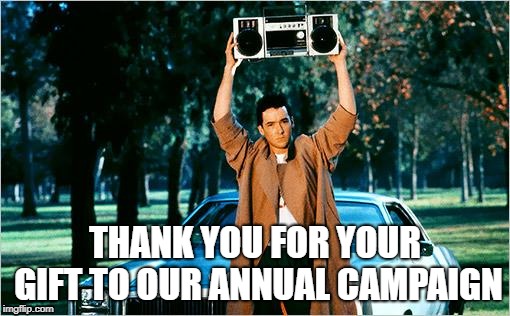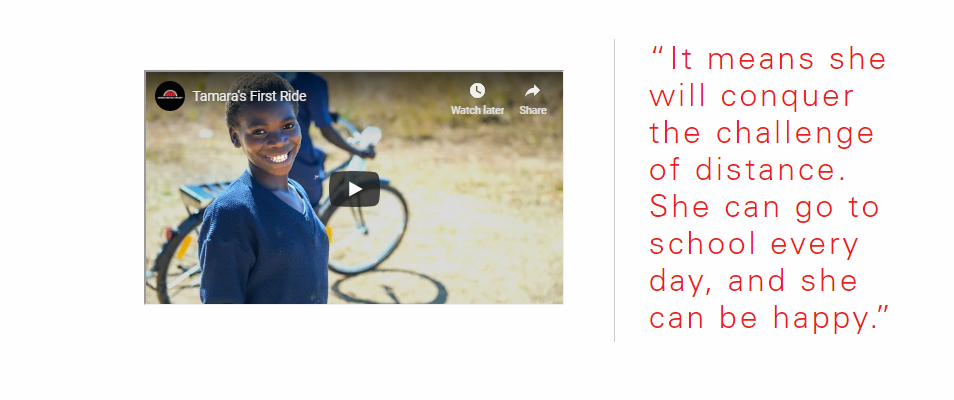In some ways, donor retention isn’t all that different from dating.
Just like romantic relationships, your organization’s relationships with its donors thrive on communication, appreciation, loyalty, and trust. And just like a romantic relationship, if your donors don’t know you love them, they might not stick around.
You can start building a passionate, unbreakable love for the ages by letting your donors know how much you like them. (No smooching, though. This isn’t a perfect metaphor.)

You’ve Lost That Lovin’ Feelin’
This is about more than mushiness. Showing love and appreciation to your donors addresses a very real nonprofit problem: donor retention.
Donor retention stats are not mushy at all. The nonprofit sector as a whole has a fairly dismal retention rate, without much change in the past ten years. We’re stuck below 50%, so if your numbers aren’t great, you’re not alone.
That’s right: Donors are regularly dumping us.
Sure, some of the reasons donors leave are unavoidable. In these cases, it’s really not you, it’s them. Budgets shift, priorities change, and people…die (16%!). There’s nothing you can do about any of that. Some things don’t work out. You’ll never retain 100% of donors forever and ever.
But a lot of donor-organization break-ups are completely avoidable with the right communication. Donors who don’t know what their gifts accomplish, don’t know that you appreciate them, and never hear from you are going to drift. They’ll forget all about you, think you don’t need them, or fall for someone else, like an organization that actually, you know, talks to them.
What’s an organization to do, getting ghosted about half the time, and struggling to maintain donor relationships?
Get better at relationships.
Can’t Help Falling In Love With You
I guess we could call this “cultivation,” if you insist. I like “donor love” though, because this is, at its heart (get it?) about emotions. It’s about how you make donors feel.
You can’t fake donor love. For one thing, people know when they’re being patronized, and no one likes false enthusiasm. Likewise, this isn’t a transaction in which you give a requisite amount of appreciation in return for a guaranteed amount of loyalty. “Donor love” works best when you have actual gratitude for your supporters.
If you’re feeling kind of cold about the whole thing, I get it. Sometimes when you work in fundraising, the whole thing gets overwhelmed with numbers and goals and it’s hard to connect. And sometimes (shh…) sometimes individual donors can be annoying, and make you feel sort of sour about the bunch of them. The burnout is real. You’re not a jerk if you’ve wound up in this “not feeling it” place, but you can’t afford to stay there.
I like to think about it like this: Just as no one is obligated to date you, no one is required to give to your organization.
Think about your total contributed income last year. Not a dime of that was compelled. No, all of that contributed money exists because people (including the people who make up corporations, foundations, and governments) decided they wanted to make a difference and that giving to your organization was the best way to make that happen.
Those people are awesome.
When I consider donors in this light, I get a little misty and overwhelmed, honestly. I want them to know how much I appreciate them, and what heroes they are. Getting yourself into the right heartspace will go a long way to creating an actual love for your donors, which you authentically express.
When A Nonprofit Loves A Donor
You don’t have to stand outside a window with a boombox to let your donors know you appreciate them. In fact, I really advise against this.

Instead, encourage your donors to make things long-term by communicating these important messages:
- “We’re In This Together”
Donors want to feel like they’re part of something. Just like talking solely about yourself doesn’t usually get you a second date, only talking about how great your organization is or how much you need money, leaves the donor out of the conversation.Instead, emphasize how donors power the work that you do. Offer donors a place in your community. Point to their gifts to demonstrate how they’re part of the team solving the problem.Lean heavily on the words “you” and “your” in your communications, as in “You did it!/ With your help/Because of you/Your generosity did Specific Good Thing.” This makes it personal for the reader and demonstrates the direct result of their giving. - “You’re A Hero”
Donors want to make a difference. Make the donor the hero of the stories you tell. Show them how they make change happen, what the impact of their gift is, and who and how they’re helping.
World Bicycle Relief show’s donors the difference they made in one person’s life. - “We See You”
Nothing says, “I don’t know who you are” like an email that starts out, “Dear Friend,” unless it’s a voice mail message after you’ve asked not to be called. You can communicate a lot before your donor even gets to your actual message, so it’s worth it to be thoughtful.Luckily, technology is here to help. Use your CRM to organize your donor data so that you can remember relevant facts about them and respect their communication preferences. Then, segment your donor communications so that your messages are always relevant to the people you send them to. - “We’re Ready To Take The Next Step”
Just like a romantic relationship, your donor relationships can deepen over time. You don’t just keep going on first dates with the same person, unless you’re trapped in a romantic comedy.Even if your donors want to get more serious, you have to make the first move with a call-to-action. Let them know what their options are, whether it’s participating in a peer-to-peer campaign, volunteering, or donating their birthday to DIY fundraise.
Endless Love
Start showing your donors the love they deserve today. Don’t let them forget you exist, think you don’t need them, or keep their connection casual. Try:
- Calling
The phone can be a fundraiser’s best friend. This month, start treating your new donors like new dates–call them the next day to say thanks. It doesn’t have to be a big production, just let them know you received their gift, and appreciate it.In my experience, most donors are simply tickled to discover you aren’t calling to ask for money, but just to say thank you. - Writing
Take a look at your standard thank you letter. Does it make you feel warm and fuzzy? Does it sound like a robot wrote it? Is it basically just a tax receipt? Do you send the same one every single time?Oh no, my friend. This will not do.Would you write a love letter that started, “On behalf of…”? Of course not! A thank you letter is like a love letter to your donors. It should convey your gratitude, show what they made happen, and make them feel awesome about themselves and you. This is definitely a place for “You are a hero!” to ring loud and clear.Just as you wouldn’t send the same person an identical love letter four times a year, donors shouldn’t get absolutely identical letters multiple times. You don’t have to send a completely different letter, but consider switching out stories, impact updates, and other details at least seasonally.
- Asking Them Out
A person who only talks to you when they want money is not someone you should date. Likewise, if you only communicate with your donors when you’re asking them to donate, they may start to feel like walking checkbooks, and walk right out the door.Regular impact updates and inspirational storytelling about your cause will help keep donors interested. So will inviting them to do something that isn’t giving money: attending events, volunteering, and simply inviting them to come and see what you’re doing. Consider in-person events like a tour of your facility, a field trip to see your work in action, or an open house.Joining a peer-to-peer fundraising campaign is another way for supporters to deepen their connection with you. If you don’t have anything scheduled, offer your supporters an option to raise money independently with DIY fundraising. - Surprising Them
Sometimes, you’ve just got to bring someone flowers out of the blue, just because you like them. In the same way, little surprise expressions of appreciation can really make a donor’s day.Consider sending “just because” thank you notes to your long-time supporters. Send birthday cards and anniversary congratulations. Shout out a supporter on your social media. Think outside of the box.
You’ve Got The Best Of Our Love
I feel very cheesy telling you that love is the answer. But love is the answer to donor retention, or at least a very big part of the answer. (I mean, a fundraising CRM and a fundraising platform that allows you to easily communicate with supporters and activate them to become advocates is going to help, too.)
If you feel overwhelmed at the idea of crafting an entire donor retention strategy, start with love. Look for opportunities to show your donors you appreciate them, and work from there. You really can’t go wrong starting with love and gratitude.
If You Liked This Post, Try:
Donor Cultivation Tips: 4 Things You Must Do Before You Ask For More Money




